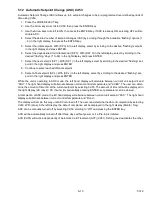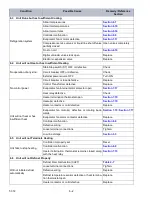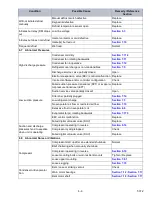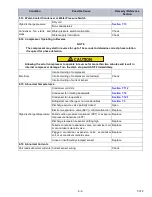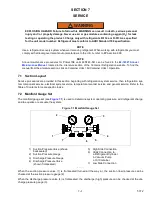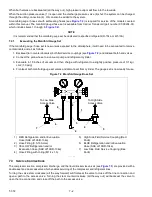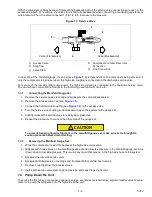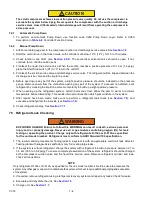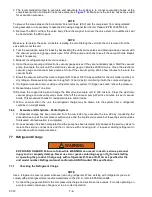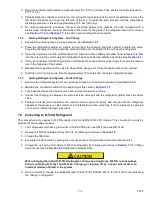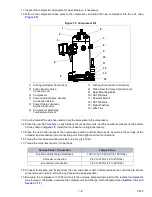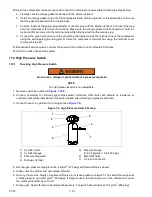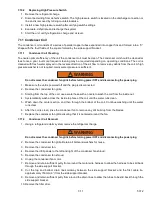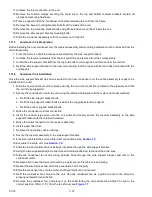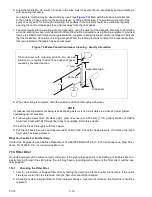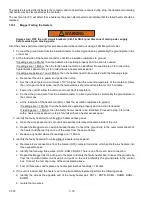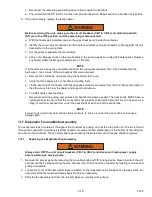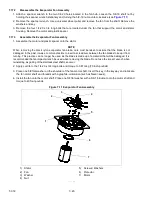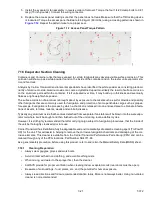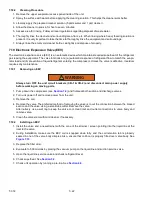
7–7
T-372
2. Bring the container temperature to approximately 0°C (32°F) or below. Then set the controller setpoint to -
25°C (-13°F).
3. Partially block the condenser coil inlet air. If covering the lower portion of the coil is not sufficient, remove the
left hand infill panel and cover the left side of the coil. Increase the area blocked until the compressor
discharge pressure is raised to approximately 12.8 bar (185 psig).
4. On units equipped with a receiver, the level should be between the glasses. On units equipped with a
watercooled condenser, the level should be at the center of the glass. If the refrigerant level is not correct,
see
and
to add or remove refrigerant as required.
7.7.2
Adding Refrigerant to System - Full Charge
1. Evacuate the unit and leave in a deep vacuum. See
2. Place the refrigerant cylinder on a scale and connect the charging line from cylinder to liquid line valve.
Purge the charging line at the liquid line valve and then note the weight of the cylinder and refrigerant.
3. Open the liquid valve on the cylinder. Open the liquid line valve halfway and allow liquid refrigerant to flow
into the unit until the correct weight of refrigerant has been added as indicated by scales. See
.
4. It may be necessary to finish charging the unit through the suction service valve in gas form, due to pressure
rise in the high side of the system.
5. Backseat the manual liquid line valve to close off the gauge port. Close the liquid valve on the cylinder.
6. Start the unit in cooling mode. Run for approximately 10 minutes and check the refrigerant charge.
7.7.3
Adding Refrigerant to System - Partial Charge
1. Examine the refrigerant system for any evidence of leaks, and repair as necessary. See
.
2. Maintain the conditions outlined in the beginning of this section,
.
3. Fully backseat the suction service valve and remove the service port cap.
4. Connect the charging line between the suction service valve port and the refrigerant cylinder. Open the Vapor
valve.
5. Partially frontseat (turn clockwise) the suction service valve and slowly add charge until the refrigerant
appears at the proper level. Be careful not to frontseat the suction valve fully. If the compressor is operated
in a vacuum, internal damage may result.
7.8 Converting to R-513A Refrigerant
This procedure only applies to R-513A-ready units for 69NT40-561-500 models. This conversion is only by
approval of the equipment owner.
1. The compressor will have a green dot on the DUV fitting to note that it can accept R-513A.
2. Recover all R-134a refrigerant from the unit, by following procedure in
.
3. Change the filter drier.
4. Evacuate to 500 microns by placing the vacuum pump on the liquid line and suction service valve.
5. Charge the unit with a full charge of R-513A refrigerant, by following procedure in
. Charge
CAUTION
!
When charging the unit with R-513A refrigerant, charge as a liquid only. R-513A is an azeotrope
blend containing R-1234yf and R-134a. Charging or topping off as a vapor will result in an
incorrect mixture of blend in the system.
6. Upon completion, change the refrigerant label (Carrier P/N 76-50235-00) on the front of the unit indicating
the change in refrigerant.

